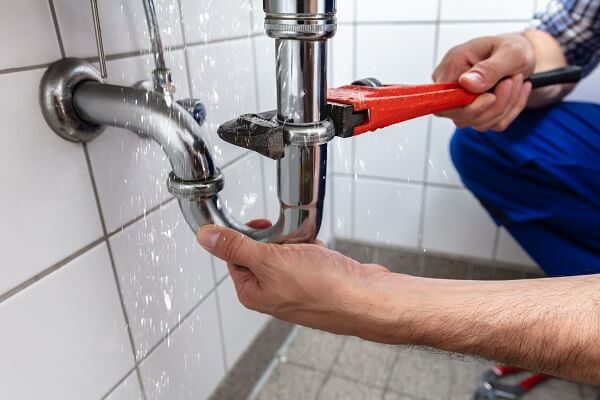Many building owners or facility managers are not familiar with the plumbing parts of a commercial toilet until a problem arises. Managers can easily troubleshoot or handle certain issues with adequate knowledge of the toilet parts.
Plumbing parts of a toilet
The following are plumbing parts found in a commercial toilet:
Tank: Located at the back of the toilet, the tank holds the water for the bowl and the parts of the toilet.
Bowl: Contains wastewater and flushes waste with the water from the tank.
The flush handle: The part most people interact with, the flush handle is attached to the trip lever, which raises the flapper to let water enter the bowl from the tank.
Trip lever: This part connects the flush handle to the flapper. The level raises the flapper when you flush the toilet and releases water into the bowl to push wastewater down the sewer drain.
Float ball: The float ball mainly gauges the water present in the tank. The ball descends as the water level lowers, and the ball will rise as the tank refills the toilet. Water stops running when the ball reaches the highest level.
Overflow tube: This tube prevents the tank from overflowing when the toilet is running. It extends into the drain and gets rid of excess water.
Flapper Valve: The flapper is connected to the flush handle by the trip lever and a chain. If the flapper is pushed down, water remains in the tank. When flushing, it causes suction to pressurize the water entering the bowl to create enough force to flush the toilet.
Stop valve: It is also known as the toilet supply valve because it controls the delivery of fresh water into the tank. It is usually fitted behind the toilet close to the floor. If overflowing occurs, the stop valve can be used to stop water flow into the tank.
That is not all
Supply tube: The supply tube and the refill tubes are linked; they are separate parts. The supply tube delivers water from the main supply into the refill tube to refill the bowl.
Refill tube: When the float ball descends, the refill tube supplies water to the bowl from the supply tube. After flushing, the ball will rise to a particular level where the refill restricts water flow.
Trap: The trap is the seal that restricts backflow and foul odors from coming back up the main sewage pipe. If a foul odor is detected near the toilet, then the seal or the trap is faulty.
Wax ring: Wax ring can also cause bad odors. It is the seal bordering the sewage line and the toilet. A bad wax ring can also cause the bottom of the toilet to leak.
Final note
When there is a problem with the toilet plumbing, either a leaking toilet or foul sewage odor, you should call a professional plumber to check. There could be a problem with the main sewer line. Familiarizing yourself with the plumbing parts of the commercial toilet will help you make guided decisions when an issue occurs.
Request an appointment here: https://www.bevillstexas.com or call Bevills Plumbing, Heating & Air Conditioning at (325) 225-4115 for an appointment in our Abilene office.

